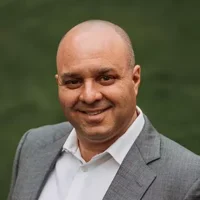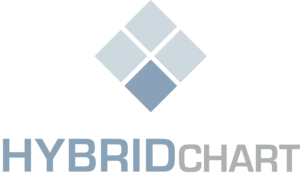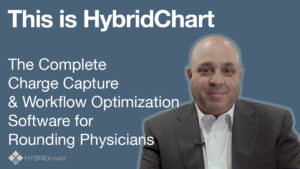Early in my clinical applications career, we were wading through Meaningful Use Stage 2. It was painful for all concerned. Perhaps one of the biggest associated challenges we had to work through was pop-up fatigue. This culminated when we rolled out an important part of meeting MU2 – a Clinical Decision Support tool.
The CDS had its helpful moments, but the signal-to-noise ratio was high. Once, I spent the afternoon working with a physician assistant to ensure that she was comfortable with the system. While documenting a visit for a diabetic patient, the CDS triggered an inbox alert. That alert required five clicks to resolve – I remember because she made me count along with her – the patient’s HgbA1c of 11 was too high and should be lower than 7. Her response? “Well, no kidding, Dick Tracy. I’d be a pretty lousy at my job if I didn’t realize that.” Spoiler alert – she didn’t use the word kidding, but I’ll let you figure that one out.
It begs the question – what’s in your EHR inbox? Lab results? Patient messages? Very likely. It’s also likely that it’s full of system-generated messages about clinical recommendations and reminders to order this test or that. It can really feel like you’re at the mercy of The Mighty Algorithm when it comes to healthcare workflow.
In fact, a new study by Health Affairs found that system-generated messages were responsible for nearly half of EHR inbox volume. When this data was combined with reported symptoms of burnout, the results suggested that “receiving an above-average number of system-generated messages was associated with a 40% increase in the probability of burnout and a 38% increase in the probability of intending to reduce clinical work hours”. Yikes.
The goal of CMS regulations, like Meaningful Use (and all its iterations since), is to increase the quality of care for patients. I’ve yet to meet a clinical professional who didn’t agree that improving quality is an important goal worth meeting, but that’s complicated by the sheer mountains of data involved. Data needs to be gathered, it needs to be reviewed, and it needs to be analyzed.
Further compounding the problem is that it often feels like the tools used in patient care inundate the wrong people with information they don’t need while simultaneously not being flexible enough to accommodate out-of-the-box problems. That doesn’t even address the significant gap that exists between the inpatient and outpatient worlds. Interoperability, automation, and other workflow solutions not only benefits clinicians providing care but greatly improves things for patients receiving the care. We have a long way to go to ensure there is a complete picture of the patient; not just a snapshot.
Consider the patient with the too-high HgbA1c. Let’s imagine that her HgbA1c was 11 when leaving the hospital. This isn’t a problem that can be solved overnight; as we all know, good diabetes care requires a long-term strategy. Most physicians who provide outpatient care do so with the help of a strong team of professionals – nurses, medical assistants, technicians, and others. Is yet another system-generated inbox message to the doctor or advanced practice provider warning about the dangers of high blood sugar the best way to get this patient the right care, or would it be better to leverage that strong team back at the office? I’d argue for the latter.
HybridChart is a smarter rounding tool for physicians, and it can help with these needs. When the physician sees the patient in the hospital and adds an ICD-10 code for charging purposes, that diagnosis code can automatically trigger a message to the diabetic nurse back at the practice, check off a metric that can be reported on later, and flag the patient as high risk. What if it makes more sense to check off the metric and skip the messaging? No problem. Using HybridChart’s proprietary smart automation tool Pathways™, your practice can set up triggers and actions that make the most sense for your needs. Use the tool to gather data that’s meaningful and actionable – not a rubber stamp from The Mighty CMS Algorithm. Smart automation when it comes to medical analytics can let physicians and other providers leverage their team, so they’re not bogged down trying to manage all the data.
Ultimately, this means more quality care for patients and less time sifting through unnecessary pop-ups and inbox messages. Sounds like a win-win to me.
Meet EVOLVE by HybridChart – Our fourth generation software platform.
Take control of your entire workflow through a user-friendly solution created by a physician. Medical software too often fails to address the specific needs of providers. Rounding at one or more hospitals presents a unique challenge. There is the need for effective team collaboration and easy charge capture. Census management means true collaboration among provider and staff. Rounding at multiple facilities just got way easier. Covering on-call now has the luxury of essential information for clean hand-offs. Charge capture takes less than five seconds. Diagnoses are easy to find and follow the patient. Customized charge menus make it easy to enter the correct charge. Don’t let billing for your work slow you down. Charge in real-time and focus on caring for the patient.
HybridChart has numerous levels of safeguards against missed charges. The Charge Checker feature will scan every day of an admission and assure there are charges. Using the Charge Matrix you have visibility of all charges from multiple providers per day for any given patient.
Most practices see a revenue increase of 8-10% after using HybridChart – attributed to capturing every charge for every patient. Charges are complex enough with just the diagnosis codes and charge codes. To make your charges accurate HybridChart allows you to easily adjust the Date of Service and assign Secondary Billers such as nurse-practitioners and physician assistants. Modifiers can be built into specific Billing Modules or choose from a customized list managed by your practice. Seamlessly navigate our Charge Capture workflow and save time without losing accuracy.
An automated charge capture system may be the most profitable investment that you can make in your practice today.
You can instantly boost your revenue by 10% using our modern, high-tech and easy-to-implement charge capture system.
Smarter Rounding and Workflow Software for Doctors
At HybridChart, we provide technology that connects your healthcare team, increases efficiencies, AND improves your bottom line. HybridChart’s cloud-based software adapts to your practice’s unique workflow and will improve your profitability and patient outcomes by utilizing our 5 features: census management, charge capture, secure messaging, discharge management, and data analytics.
NEVER miss another charge and get PAID for the work you do!
If you are interested in taking your medical practice to the next level and want to employ the best hospital charge capture practice available in the industry, come visit our website at www.hybridchart.com, or call us at 1-877-684-0608 for a demo today!







